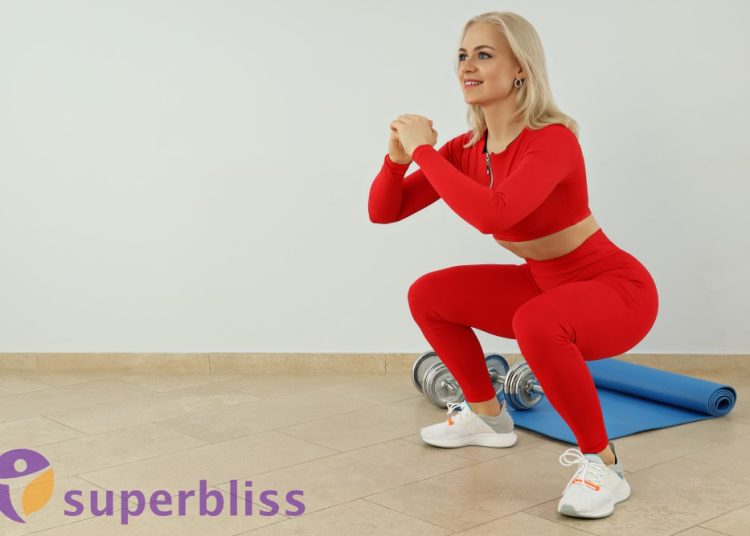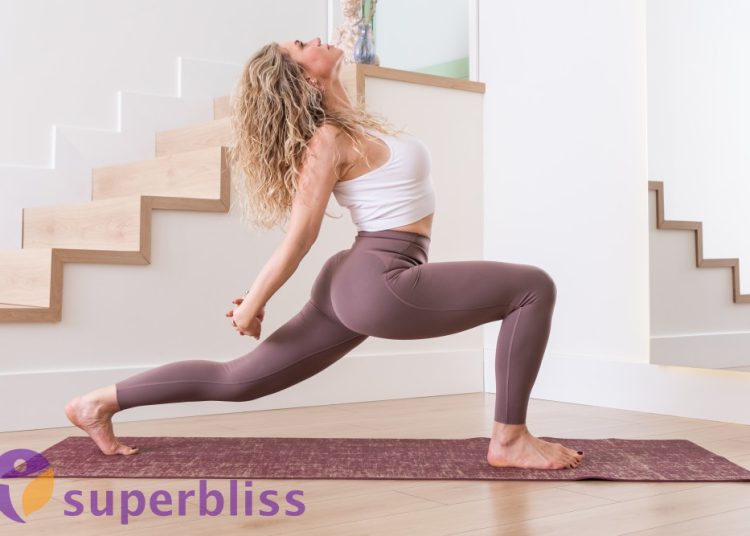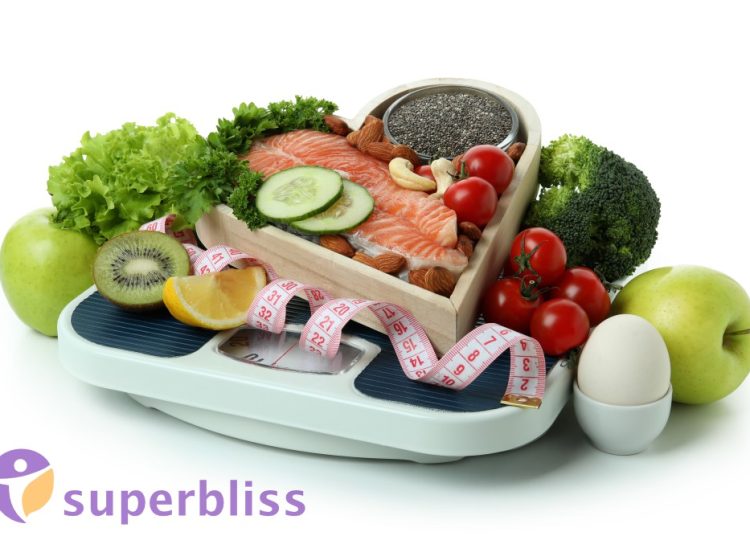Table of Contents
When it comes to losing weight, regular exercise plays a crucial role alongside a balanced diet. Incorporating the right exercises into your routine can help you burn calories, boost your metabolism, and achieve your weight loss goals more effectively. In this comprehensive guide, we will explore the best exercises to lose weight and provide you with practical tips to optimize your workout routine. So, let’s dive in and discover the most effective exercises for shedding those extra pounds.
1 Understanding Weight Loss
What Causes Weight Gain?
Weight gain is often attributed to a calorie surplus, where you consume more calories than your body needs for energy. Factors such as sedentary lifestyle, poor dietary choices, hormonal imbalances and genetics can contribute to weight gain.
The Importance of Exercise for Weight Loss
Exercise is a powerful tool for weight loss as it helps you burn calories and fat. Additionally, regular physical activity improves cardiovascular health, boosts metabolism, increases muscle mass, and enhances overall well-being.
Setting Realistic Weight Loss Goals
Before starting your weight loss journey, it’s essential to set realistic goals. Aim for gradual and sustainable weight loss, typically around 1-2 pounds per week. This approach ensures that you’re more likely to maintain your progress in the long run
2 Cardiovascular Exercises for Weight Loss
1. Running and Jogging
Running and jogging are excellent cardiovascular exercises that help burn a significant amount of calories. Lace up your shoes, hit the pavement, and watch the pounds melt away.
2. Cycling
Cycling is a low-impact exercise that offers numerous benefits for weight loss. Whether you prefer outdoor biking or using a stationary bike, it’s an effective way to burn calories and strengthen your lower body muscles. Aim for at least 30 minutes of cycling per day to get your heart rate up and boost your metabolism.
3. Swimming
Swimming is a full-body workout that provides both cardiovascular and resistance training benefits. It is gentle on the joints, making it an ideal exercise for individuals with joint pain or injuries. Swim laps, participate in water aerobics classes, or engage in other water-based activities to torch calories and tone your muscles.
4. Jumping Rope
Jumping rope is a high-intensity exercise that can be done anywhere and requires minimal equipment. It is an excellent calorie burner and helps improve coordination and cardiovascular endurance. Incorporate jumping rope into your workout routine for a fun and challenging way to shed those extra pounds.

3 Strength Training Exercises for Weight Loss
1. Squats
Squats are compound exercises that target multiple muscle groups, including the glutes, quads, hamstrings, and core. By incorporating squats into your routine, you not only burn calories but also build lean muscle mass, which helps boost your metabolism.
2. Lunges
Lunges are another effective lower body exercise that targets the glutes, quads, and hamstrings. They also engage the core muscles for stability. Add lunges to your workout regimen to strengthen and tone your legs while burning calories.
3. Deadlifts
Deadlifts primarily target the muscles in the lower back, glutes, hamstrings, and quadriceps. This compound exercise not only helps with weight loss but also improves posture and enhances overall strength. Proper form is crucial when performing deadlifts to prevent injury, so consider working with a trainer if you’re new to this exercise.
4. Push-ups
Push-ups are a classic exercise that engages the muscles of the upper body, including the chest, shoulders, triceps, and core. They can be modified to accommodate different fitness levels, making them accessible to beginners and advanced individuals alike. Incorporate push-ups into your routine to tone your upper body and burn calories.

4 High-Intensity Interval Training (HIIT)
Benefits of HIIT
High-Intensity Interval Training (HIIT) involves short bursts of intense exercise followed by brief recovery periods. This type of workout is highly effective for weight loss as it elevates your heart rate, burns a significant amount of calories, and stimulates fat burning.
HIIT Workout Examples
1. Tabata
Tabata training consists of 20 seconds of all-out exercise followed by 10 seconds of rest, repeated for four minutes. You can choose exercises like burpees, mountain climbers, jumping jacks, or squat jumps for your Tabata workout.
2. Circuit Training
Circuit training involves performing a series of exercises targeting different muscle groups with minimal rest in between. It keeps your heart rate elevated and maximizes calorie burn. Create your own circuit or try circuit training classes available at gyms or fitness studios.
By incorporating HIIT workouts into your routine two to three times a week, you can boost your metabolism, improve cardiovascular fitness, and achieve weight loss efficiently.

5 Yoga and Pilates for Weight Loss
Benefits of Yoga and Pilates
Yoga and Pilates provide a holistic approach to weight loss by combining physical movement, breath control, and mindfulness. They help improve flexibility, strengthen the muscles, enhance posture, and promote overall well-being.
Yoga Poses for Weight Loss
1. Downward Dog
Start in a push-up position, with your hands shoulder-width apart and your feet hip-width apart. Lift your hips up and back, forming an inverted V shape with your body. This yoga pose stretches the hamstrings, shoulders, and calves while engaging the core muscles.
2. Warrior II
Stand with your feet wide apart, with one foot pointing forward and the other foot turned out to the side. Bend your front knee, keeping it aligned with your ankle, and extend your arms out to the sides. Warrior II strengthens the legs and improves balance and stability.
3. Plank Pose
Begin in a push-up position and lower your forearms to the ground, elbows directly beneath your shoulders. Engage your core muscles and hold the position, keeping your body in a straight line from head to toe. Plank pose strengthens the core and improves overall body stability.

6 Pilates Exercises for Weight Loss
1. The Hundred
Lie on your back with your knees bent and your feet flat on the floor. Lift your head, neck, and shoulders off the ground, and extend your arms alongside your body. Pump your arms up and down while inhaling for five counts and exhaling for five counts. The Hundred is a challenging Pilates exercise that engages the core muscles and increases overall body strength.
2. Leg Pull Front
Begin in a plank position, with your hands directly under your shoulders and your body in a straight line. Lift one leg off the ground and extend it forward, keeping your hips level. Alternate between legs, engaging the core and glute muscles. Leg Pull Front targets the abdominals, glutes, and upper body muscles.
Incorporating yoga and Pilates into your fitness routine not only aids in weight loss but also improves flexibility, balance, and body awareness.

7 Other Effective Exercises for Weight Loss
1. Walking
Walking is a simple yet highly effective exercise for weight loss. It is low-impact and can be done anywhere, making it accessible to people of all fitness levels. Aim for brisk walks of at least 30 minutes a day to burn calories and improve cardiovascular health.
2. Dancing
Dancing is a fun and enjoyable way to lose weight. Whether you join a dance class or simply dance to your favorite tunes at home, it’s a great way to get your heart rate up, burn calories, and improve coordination.
3. Kickboxing
Kickboxing combines martial arts techniques with high-intensity cardio exercises. It helps improve cardiovascular endurance, burn calories, and strengthen your muscles. Consider joining a kickboxing class or following online tutorials for an invigorating workout.
4. Circuit Training
Circuit training involves performing a series of exercises targeting different muscle groups with minimal rest in between. It keeps your heart rate elevated and maximizes calorie burn. Create your own circuit or try circuit training classes available at gyms or fitness studios.

8 The Role of Diet in Weight Loss
While exercise is vital for weight loss, it is equally important to focus on your diet. Here are some key considerations:
1. Balanced and Nutrient-Dense Diet
Opt for a balanced diet that includes a variety of fruits, vegetables, whole grains, lean proteins, and healthy fats. Avoid processed foods, sugary drinks, and excessive sodium intake.
2. Caloric Deficit
To lose weight, you need to create a caloric deficit by consuming fewer calories than your body needs. Track your daily calorie intake and ensure that it is lower than your estimated energy expenditure.
3. Importance of Portion Control
Practice portion control to prevent overeating. Use smaller plates, measure your food portions, and pay attention to your body’s hunger and fullness cues.
4. Incorporating Protein and Fiber
Include adequate protein in your meals to promote satiety and preserve lean muscle mass. Good sources of protein include lean meats, poultry, fish, eggs, legumes, and dairy products. Additionally, prioritize fiber-rich foods such as fruits, vegetables, whole grains, and legumes to aid digestion and promote feelings of fullness.
5. Creating a Workout Routine for Weight Loss
When creating a workout routine for weight loss, it’s important to find the right balance and incorporate a variety of exercises. Here are some tips:
6. Finding the Right Balance
Include a mix of cardiovascular exercises, strength training, and flexibility exercises in your routine. This combination will help you burn calories, build lean muscle, and improve overall fitness.
7. Planning Weekly Workouts
Schedule your workouts for the week and stick to a consistent routine. Aim for a minimum of 150 minutes of moderate-intensity aerobic activity or 75 minutes of vigorous-intensity aerobic activity per week, along with strength training exercises at least twice a week.
8. Mixing Different Types of Exercises
To prevent boredom and challenge your body, mix up your workouts. Alternate between different forms of cardiovascular exercises, strength training exercises, and activities like yoga or Pilates. This variety will keep you engaged and continuously challenge your body.
9. Staying Motivated on Your Weight Loss Journey
Losing weight and maintaining a healthy lifestyle requires consistent motivation. Here are some strategies to stay motivated:
10. Setting Short-Term and Long-Term Goals
Set specific, achievable goals for both the short-term and long-term. Celebrate small milestones along the way, such as losing a certain amount of weight or achieving a fitness milestone. These victories will keep you motivated and on track.
11. Tracking Progress
Monitor your progress by keeping a record of your workouts, measurements, and changes in weight. Seeing your progress in black and white can be highly motivating and provide a sense of accomplishment.
12. Rewarding Yourself
Treat yourself when you reach milestones or achieve your goals. Rewarding yourself with non-food incentives such as a massage, new workout gear, or a day off can provide additional motivation.
13. Finding Support and Accountability
Join fitness classes, find a workout buddy, or seek support from friends and family who share your weight loss goals. Having a support system and someone to hold you accountable can make the journey more enjoyable and increase your chances of success.
9 Frequently Asked Questions (FAQs)
Q1: How long does it take to lose weight with exercise?
A: The rate at which you lose weight depends on various factors such as your starting weight, caloric intake, exercise intensity, and individual metabolism. Generally, a safe and sustainable weight loss rate is 1-2 pounds per week.
Q2: Is it better to focus on cardio or strength training for weight loss?
A: Both cardio and strength training are essential for weight loss. Cardio exercises burn calories and improve cardiovascular health, while strength training helps build lean muscle and boost metabolism. Incorporating both types of exercises in your routine yields the best results.
Q3: Can I lose weight without exercising?
A: While exercise accelerates weight loss and offers numerous health benefits, it is possible to lose weight through diet modifications alone. However, incorporating physical activity into your routine enhances overall well-being and helps maintain weight loss.
Q4: How often should I exercise to lose weight?
A: Aim for at least 150 minutes of moderate-intensity aerobic activity or 75 minutes of vigorous-intensity aerobic activity per week, along with strength training exercises at least twice a week.
Q5: Are there any specific exercises to target belly fat?
A: While spot reduction is not possible, incorporating a combination of cardiovascular exercises, strength training, and core exercises can help reduce overall body fat, including belly fat.
10 Bottom Line
In conclusion, there are various exercises that can aid in weight loss and contribute to a healthier lifestyle. Incorporating cardiovascular exercises such as running, cycling, and swimming, along with strength training exercises like squats, lunges, and push-ups, can help burn calories, build lean muscle, and boost metabolism. High-intensity interval training (HIIT), yoga, and Pilates also offer unique benefits for weight loss and overall fitness.
Remember, exercise alone is not enough for weight loss. It is crucial to combine it with a balanced and nutrient-dense diet that creates a caloric deficit. Focus on portion control, incorporate protein and fiber-rich foods, and stay hydrated to support your weight loss efforts.
To stay motivated, set achievable goals, track your progress, reward yourself, and seek support from friends and family. Find a workout routine that suits your preferences and interests to make exercise enjoyable and sustainable.
Now is the time to take action towards your weight loss goals. Start incorporating these exercises into your routine, make healthy food choices, and stay consistent. With dedication and perseverance, you can achieve your desired weight and improve your overall well-being.
Note: The above content is for informational purposes only and should not replace professional medical advice. Always consult with a qualified healthcare provider before making any dietary or lifestyle changes.


 Fitness
Fitness




 Weight Loss
Weight Loss




 Health
Health


 Popular Items
Popular Items Health Recipes
Health Recipes




 Health Tools
Health Tools Media Feeds
Media Feeds



 Discover:
Discover: 














Discussion about this post